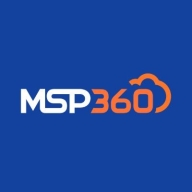

AWS Elastic Disaster Recovery and MSP360 Backup compete in the disaster recovery solutions category. MSP360 Backup holds an edge in pricing and long-term ROI due to its robust features.
Features: AWS Elastic Disaster Recovery offers seamless integration with AWS services, automated failover for minimal downtime, and secure data handling. MSP360 Backup provides cross-platform capability, integration with diverse cloud services, and versatile backup options.
Room for Improvement: AWS Elastic Disaster Recovery requires better documentation, an easier initial setup process, and more user-friendly interface. MSP360 Backup needs enhancements in data deduplication, quicker support response times, and improved incremental backup speeds.
Ease of Deployment and Customer Service: AWS Elastic Disaster Recovery is noted for its easy deployment within AWS infrastructure but has documentation issues. MSP360 Backup allows smooth multi-cloud deployment but has slower support response times.
Pricing and ROI: AWS Elastic Disaster Recovery is high-cost with slower ROI for smaller enterprises, whereas MSP360 Backup provides competitive pricing and faster ROI for SMBs.
| Product | Market Share (%) |
|---|---|
| AWS Elastic Disaster Recovery | 0.6% |
| MSP360 Backup | 0.7% |
| Other | 98.7% |


| Company Size | Count |
|---|---|
| Small Business | 5 |
| Midsize Enterprise | 4 |
| Large Enterprise | 7 |
| Company Size | Count |
|---|---|
| Small Business | 11 |
| Midsize Enterprise | 2 |
| Large Enterprise | 2 |
CloudEndure Disaster Recovery enables real-time replication and rapid recovery to enhance organizational resilience. Key features include block-level data replication, ease of use, cost-effectiveness, and automated recovery orchestration. Users benefit from increased efficiency, improved workflows, and enhanced data management, significantly improving organizational performance and business continuity.
MSP360 Backup is a comprehensive data protection solution designed for businesses of all sizes. It offers a wide range of features and capabilities to ensure the safety and security of critical data.
With support for various storage destinations, including local drives, network shares, and cloud storage providers, MSP360 Backup provides flexibility and scalability. It also offers advanced scheduling options, allowing users to automate backups based on specific time intervals or events.
The solution supports both full and incremental backups, minimizing storage requirements and optimizing backup speed. MSP360 Backup also includes built-in encryption and compression, ensuring data privacy and reducing storage costs. Additionally, it offers easy file and folder recovery, allowing users to quickly restore lost or corrupted data.
With its intuitive user interface and robust set of features, MSP360 Backup is a reliable and efficient solution for businesses looking to protect their valuable data.
We monitor all Backup and Recovery reviews to prevent fraudulent reviews and keep review quality high. We do not post reviews by company employees or direct competitors. We validate each review for authenticity via cross-reference with LinkedIn, and personal follow-up with the reviewer when necessary.